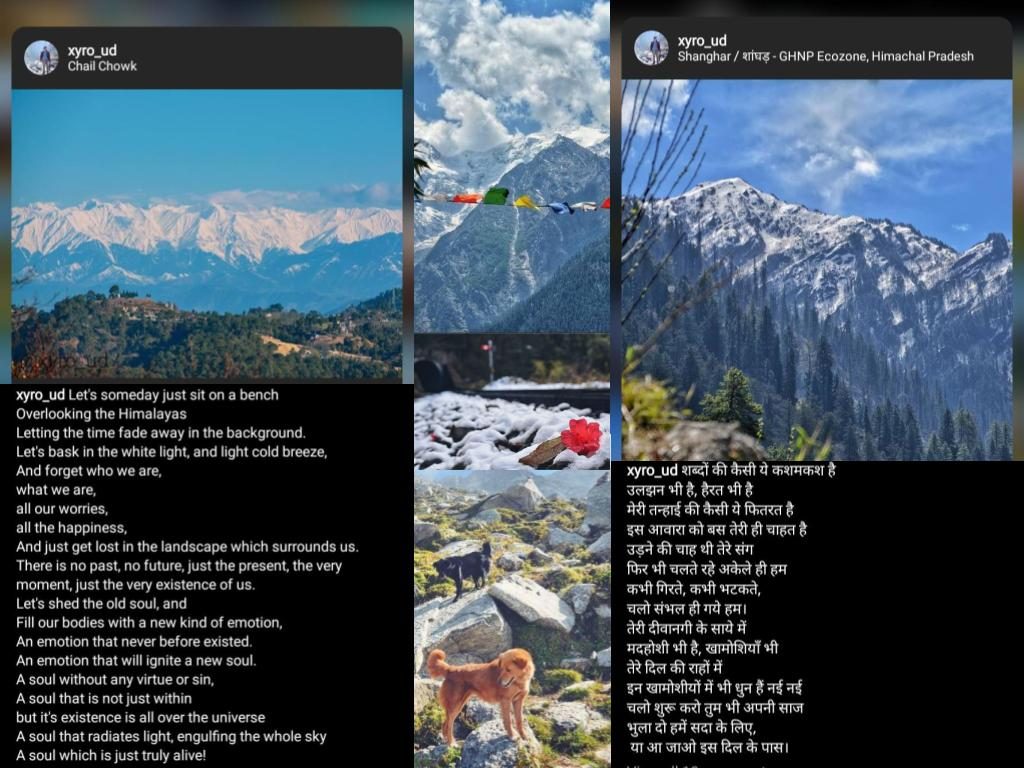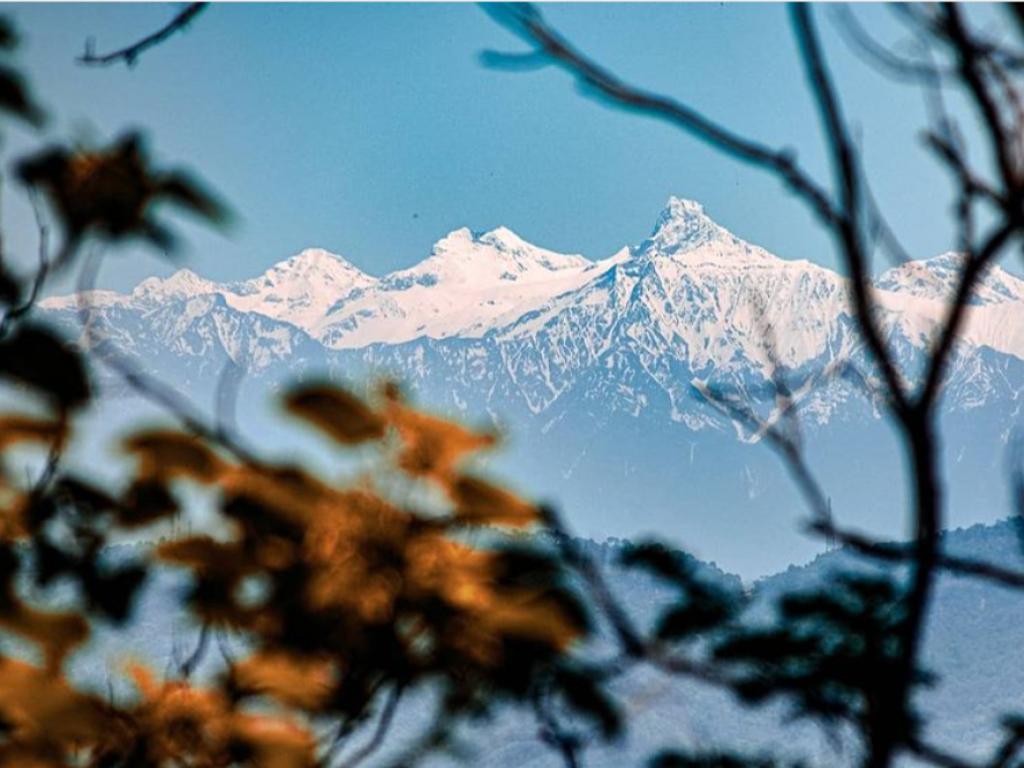
A wise man once said, “Choose a job that you like, and you will never have to work a day in your life.”
The philosophy to not only live life to the fullest but also to capture it’s most beautiful memories in words and poems, along with pursuing a career in geology so as to learn and travel in all the mysterious terrains around the globe is what makes Uday Sharma’s journey in the mountains and his career, so unique and beautiful.
Uday Sharma was born and brought up in a small village named Garli in the Kangra District of Himachal Pradesh. He did his Masters in Geology from Panjab University, Chandigarh and has worked for the Himachal State Government for almost a year now. In his determination to explore all corners of the world and understand the different landscapes around the globe, he decided to leave his job with the Himachal State Government and is currently working as a Research Fellow in the field of geology and paleoclimate at the National Center For Polar and Ocean Research, Vasco Da Gama, Goa.
We had a chance to speak to Uday about his love for travel, the tectonics of the Himalayas and other mountain ranges in India, the importance of eco-conscious travel and clothing in the post-pandemic world, and his passion for poetry and life in general!
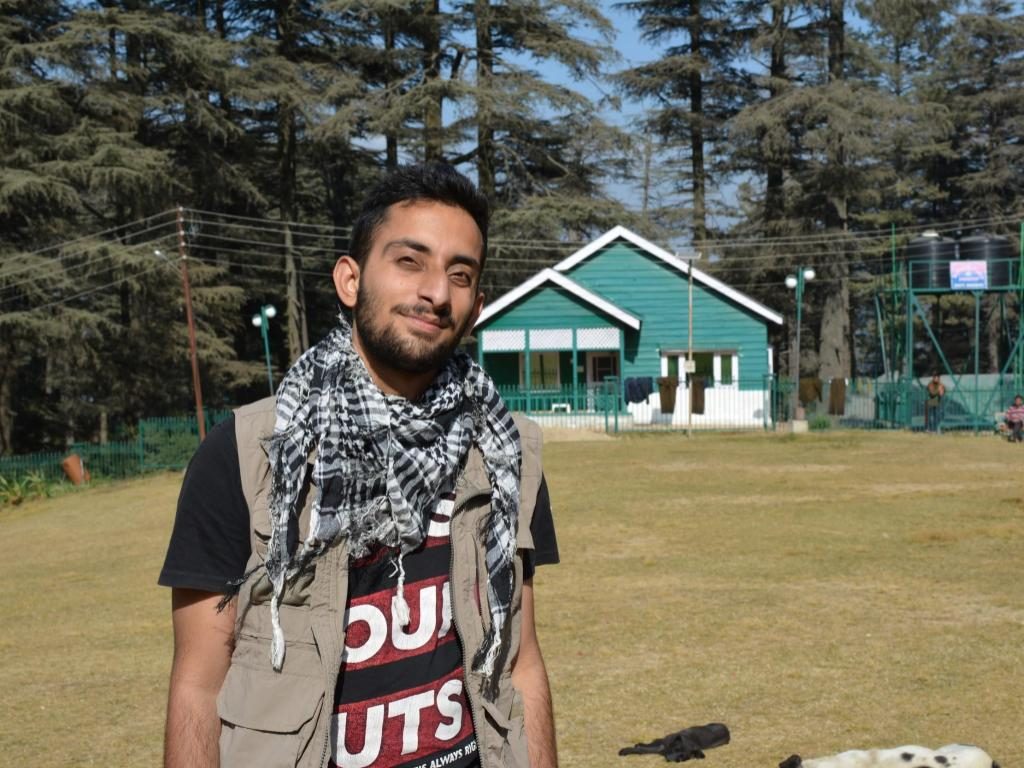
Patnitop, Jammu and Kashmir, was one of the places Uday went for his geological work.
Q. Travel has become a way of life for us. What does travel mean to you?
I believe the best thing that has happened post-2000s is the way people have travelled. My first influence to travel stories was from my father. He did his schooling in different parts of Himachal and later got transferred during his job in various parts of the state again.
But that was a different kind of travel experience. I was exposed to the digital nomad age much later during my college days when I made frequent visits to Mcleodganj.
I started trekking extensively in that time, and attempted the most common and short treks in that region such as the Indrahar Pass, Churdhar, Kareri Lake, Himani and Chamunda, etc.
From my university days, I was curious and excited to visit places and hence used to leave early morning from my university in Chandigarh on the weekend, take a bus and travel and return by evening.
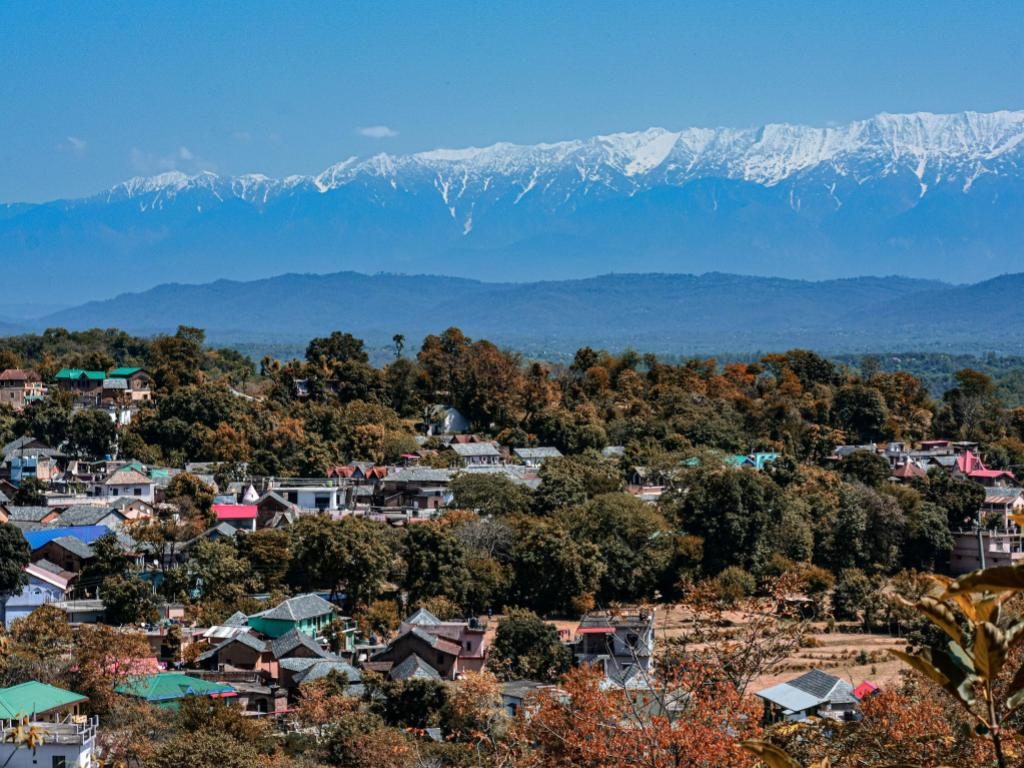
This is a picture of Uday’s home village with a backdrop of Dhauladhars.
In this way, I travelled to places such as Kasauli, Dagshai, Dehradun, and many others. I had the constant urge to go out and explore the places which I have just heard of or read about, and meet different people and learn about their diverse cultures.
I have travelled to peculiar places like Rakhigadi in Haryana, which is the Indus Valley Civilisation heritage which is at most visited by just archaeology researchers. These trips gave me an insight into typical Haryanvi culture and made me realize that travel is all about visiting new places, exploring the culture and discovering ourselves.
Q. The first thing I noticed about your instagram profile was your love for poetry. I was also impressed by your poems on WordPress. So, what inspires you to write and since when did you develop this knack for writing?
The first time I wrote something was in 6th or 7th standard when the teacher changed our seats in school. I do not even remember back then with whom I used to sit. I remember that I was quite upset after the change in seating arrangement. I wrote a short note about the event. I wrote 3-4 poems later in a couple of years and fortunately, one of them got published in a local edition of a newspaper.
But my real love for poetry started at 18 or 19 when I was a fresher in my college. Though I frequently visited Dharamshala even during my childhood, it became a different affair after my graduation. I met many travellers from other parts of the country and world and that changed my perspective about life, ultimately inspiring and influencing me to write poetry.
Q. I was particularly interested in your writeup “My Thought Process”. Is that your philosophy in life, to live by the day and not think too far ahead?
I believe that’s the ideal way to live. But even I am unable to follow this philosophy most times in my life. The human species is probably the most ambitious species in this world.
Sometimes, I am myself sucked up by long term ambitions and honestly, one lifetime is too short to pursue all of them, so I believe one should live by the day and live in the moment, hence I wrote that piece.
Q. There is this moment during our travels when we feel like we are blessed indeed to witness this. Can you share one such moment with us and the story behind it?
There is not one moment that I would be able to point out. There are many moments and memories, even the most simple moment like watching the Dhauladhars from my hometown is special and noteworthy in my life. I feel blessed and thankful to be able to be in that moment and savour every bit life has to offer.
Q. You are a geologist by profession. I have been interested in the tectonics of the Himalayas and how the height of Everest changes a little every year. Can you share some insights about the tectonic shifts in the Himalayas?
The Himalayas is the youngest and most dynamic chain on our planet. The history of Tectonic movements starts with Alfred Wegner’s theory in the early 20th century when he suggested that once, all the landmass on Earth existed together, and later broke apart into different continents. All Lithosphere that exists on Earth is divided into various plates that float on a molten Asthenosphere. There are some parts where plates diverge in the opposite direction and cracks into divergent boundaries, generating new crust. There are parts where plates slide past each other like the Western coast of North America. Also, there are places where plates collide with each other, leading to mountain chains buildups such as the Andes, Alps or our Himalayas.
The Himalayas are the result of such collisions between the Indian Plate and the Eurasian Plate. This collision is taking place even to this day as the Indian Plate is slowly sliding beneath the Eurasian Plate. Every bit of Indian crust that is subducted below adds to the vertical thickness and even lateral extension of the Himalayas. That’s why the height of not just Everest, but other peaks of the Himalayas may also be changing. There are also erosional processes by glaciers and rivers that erode the material from these mountains. Hence the growth is minimal, and all these movements take place within millimeters to centimeters range per year.
Q. As an amateur traveller going for adventure trips in Himachal / Uttarakhand, what are some of the things they should remember while travelling on these dangerous terrains?
The Himalayan terrain and ecosphere are fragile. The slightest change can significantly impact the ecosystem. All amateur travellers should make sure that they don’t pollute the place while traveling to the mountains.
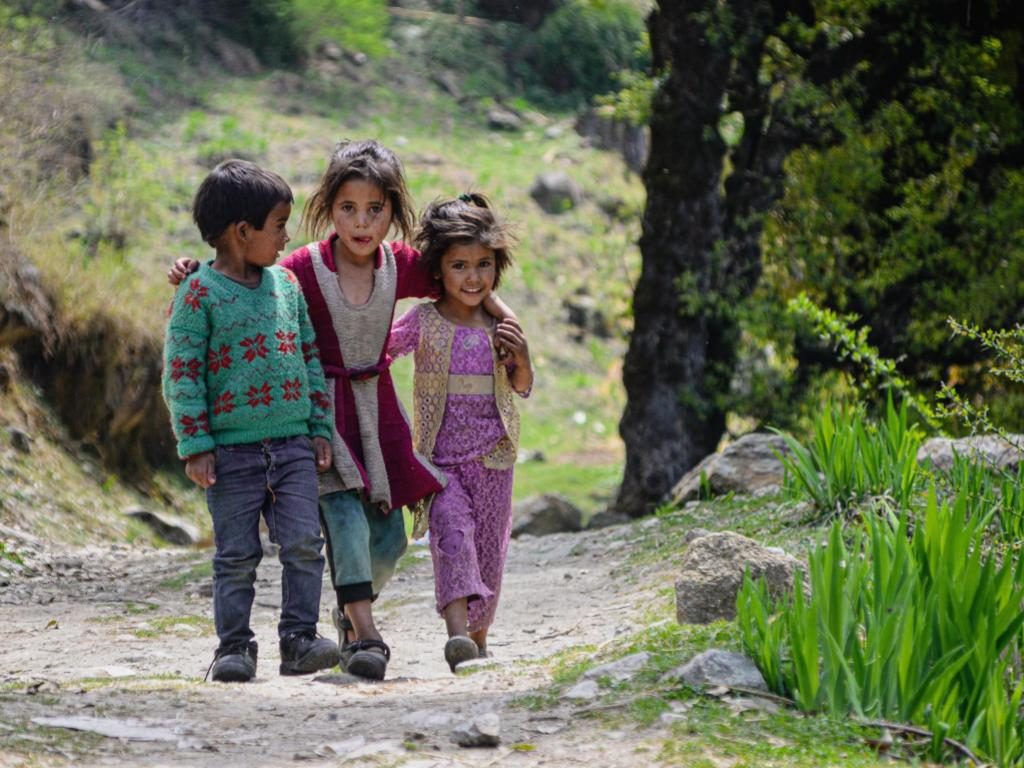
Kids playing in the picturesque village of Barshangarh in Sainj Valley, Kullu.
Organizations such as Waste Warriors, Healing Himalayas, Dhauladhar Cleaners, and many others are actively engaged in keeping these places clean. Still, every year, increasing numbers of irresponsible travellers have made the task more difficult for these organizations.
As a responsible citizen, we should avoid using non-recyclable items and properly dispose of waste materials.
Secondly, I see a lot of people trekking without proper guidance in the mountains. Even though people might not be concerned about their life, if there is an accident, it would cause trouble for both the families of the victims and the local administration.
So it’s important to plan a trek with a local guide in these dangerous terrains. This will not only help you enjoy your excursion in the wild terrains of the Himalayas in a better way but will also boost the economy of this region, which is primarily dependent on tourism.
Thirdly, it is important to respect the wildlife and surrounding ecology. While trekking in the wilderness of Kullu and Mandi, I have seen some exotic birds and animals in the forested areas. The best way to spot the animals and birds is by maintaining silence and walking or trekking as quietly as possible unless there is an emergency.
As tourists, we must always remember to not scare the creatures. The reason why we hardly witness these species in treks like Triund is because people choose to play loud music on the Bluetooth speaker and shout, rather than enjoying the serenity the mountains have to offer. People can always choose to wear headphones if they want to listen to music while trekking rather than causing sound pollution and scaring the animals.
Lastly, I believe that the tourism sector is reviving slowly and steadily post-pandemic and popular tourist destinations like Goa and Himachal were already jam packed in the last part of 2020!
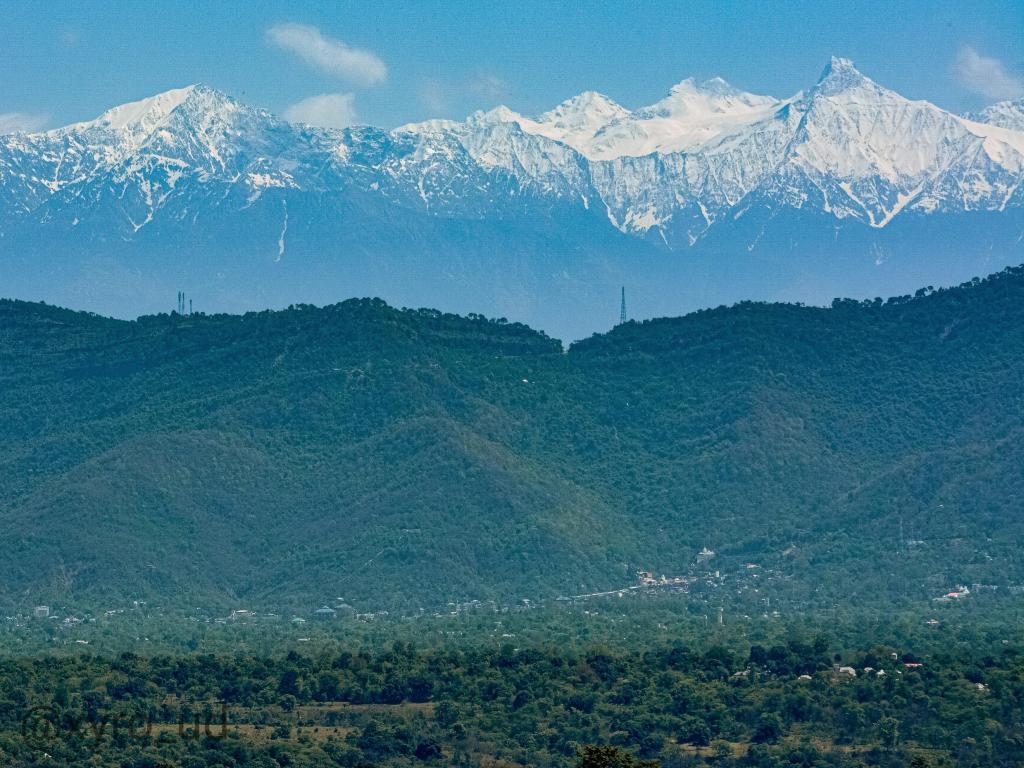
Jawlaji temple in Himachal Pradesh, along the backdrop of Dhauladhars.
But often people forget about the carbon footprints they leave on the local habitat. A recent scene from the Atal tunnel is a perfect example of this scenario. It’s disheartening to see when people do not care about the environment while they are enjoying their trips. This casual attitude of tourists ultimately leads to irreparable damage to the ecosystem and moving forward, I believe it is necessary to care about the local ecology and society.
Q. You were supposed to go to Antarctica as part of the IAP. What are your tips for people looking to travel to that place or for youngsters interested in IAP?
Unfortunately, I haven’t been to Antarctica yet. In 2019, I was supposed to go but couldn’t due to an injury, and the next year, due to the Covid situation, the scientific expedition got cancelled, only logistic team went to Antarctica. Hopefully, I will be part of next year’s expedition and finally get to visit this mysterious continent.
If someone wants to take part in IAP, they can apply for various logistic operation posts that are advertised on NCPOR website every year during the April/May/June months. If someone belongs to the scientific community, they can do background research and propose their scientific project which they would want to carry out in Antarctica. This advertisement is shown every year in January/ February/ March, where proposals are invited and then shortlisted.
Another way is to be a part of the scientific organizations such as NCPOR or any other institute from where scientists usually work in the field of Antarctic research. Various scientists from organizations such as IIG, NRSC, IIRS etc. and even researchers from universities such as Delhi University and IITs take part in the prestigious IAP programme every year.
Q. While travelling to places like Antarctica, what are the clothes for the winter season one should carry?
The basic 3 layers of winter clothing are provided to the expedition members. But still additional winter layers are required in the freezing cold. Antarctica is a continent that experiences the coldest winds on Earth and the wind chill factor is of significant importance here. Here the wind chill factor can make even temperatures of -5°C feel like -20° or -30°C. In these situations, it’s important to have merino wool thermal handy along with a waterproof winter jacket for extreme cold in order to counter the severe wind chill effects you get in these regions.

Seen here: Kosha’s Base Layers for Him & Her, Waterproof Jackets for Him & Her, Accessories for Him & Her.
Q. Can you give us an overview of the Antarctic moraines and your thoughts on melting glaciers due to climate change?
Moraines are formed by the accumulation of unconsolidated sediments which are eroded by the Glaciers. There are different types of moraines, and they give insights about the weathering the glacier has been subjected to in the past. Many studies on terminal moraines are carried out in Antarctica, to know about the past extent of various glaciers present there, in relation with the last glacial maxima. But most of the Antarctic glaciers are outlet glaciers, they end up in the ocean. In these glaciers, the grounding line is more important in order to determine the climate change impact on them.
The grounding line is the boundary between the grounded part of the ice sheet or tidewater glacier and adjoining floating ice shelf. The receding grounding line of the Antarctic glacier is a big concern in today’s climate change scenario. The terminal part of the glacier is calved by the tides and results in the formation of icebergs. The effect of climate change is more prominent in Western Antarctica as compared to Eastern Antarctica.
For more information on this, one can look at the story of Thwaite glacier, also known as the Doomsday glacier, whose grounding line is receding at a rapid pace. If all the ice in Antarctica melts someday, it will raise the seawater level as much as 58-60m, leading to huge sea level rise that can cause significant damage to mankind. Hence, it’s important to curb environmental degradation to prevent natural calamities for the upcoming generations.
Q. There has been a paradigm shift in the way we live. Making a shift towards sustainability has become a necessity. What does Sustainability mean to you?
Sustainability is a necessity in today’s society. Haphazard development along with rapid industrialization over the course of the past few decades has already significantly altered the mechanism of our Earth and we are already facing its consequences. It’s necessary for today’s society to follow a sustainable way of living so that our planet remains habitable and unaltered for years to come. Evidence shows that extinction of life has happened in the past as well on our planet due to natural calamities, but never induced by any animal species.
In today’s world, the over dominance of homo sapiens has a significant adverse impact on the environment and the atmospheric mechanism of Earth. If it continues in this manner, someday nature will reciprocate harder, and evidence of that is already noticeable in the abnormal disruptive catastrophic events over the past few years. I believe it’s a matter of time before humanity joins the long line of extinct species like Dinosaurs and Trilobites if it continues in this fashion. Hence, it’s very important to maintain harmony with nature in today’s world for the benefit of not only us but for our upcoming future generations and other species who reside on Earth.
Q. What are your opinions on slow travel and revival of tourism in the post COVID era? Can you tell us about a lesson that you learned from the pandemic?
The pandemic has taken the world by storm and forced a new normal on modern Human civilization. There is no sector of society that has not felt the impact of COVID. Travel and tourism were disrupted in the early stages of lockdown, but it is now slowly getting back on track.
In this crucial time, slow tourism is the right way forward, and it’s important that the travel industry adapts to it. Slow tourism is also fulfilling as you get to experience the true essence of the place you are travelling to.
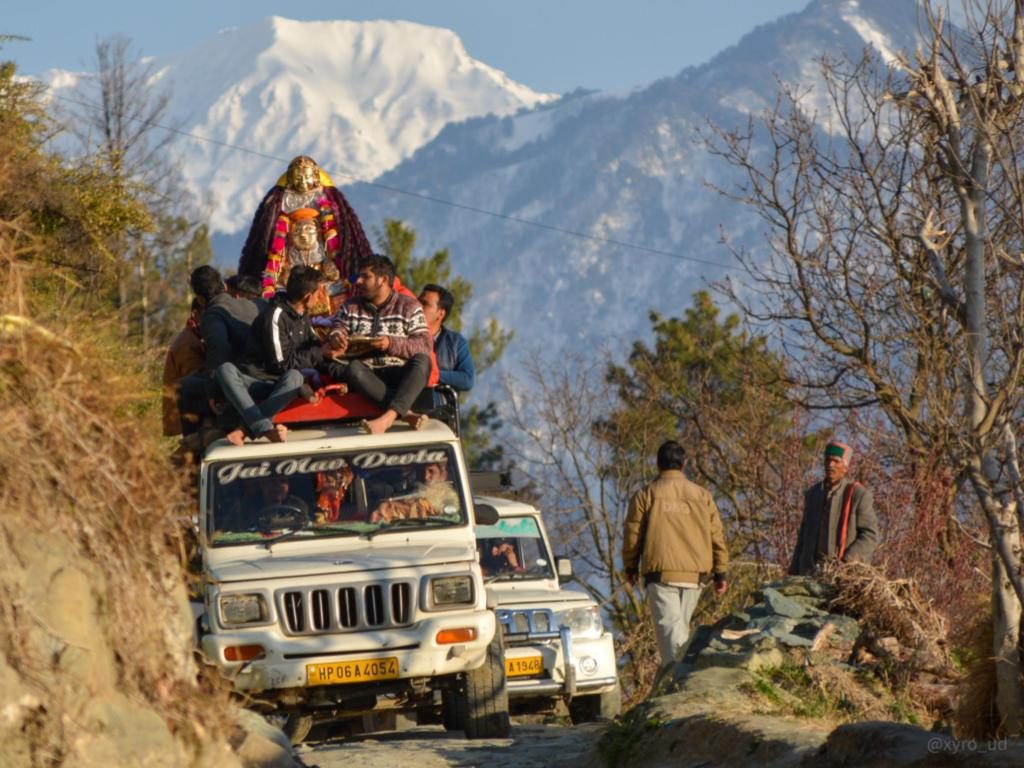
Religious procession in Dansa Village, Rampur, Distt. Shimla
Most people travel to escape the daily mundane of life, and the experience of connecting with the local society, or volunteering for the betterment of that given place, not only helps in developing the communities, but also gives us a lot of self-satisfaction as responsible tourists.
This kind of travel can help you explore not only the outer world but also your true inner self and pave the way towards mindfulness. Life is precious and we need to cherish even the smallest moments in life and in my opinion, the best form of joy comes when we can connect ourselves with nature and try to explore the different unexplored corners of our beautiful planet. I believe that we always focus on living today to the fullest as tomorrow is uncertain, we never know what it holds for us!
This interview was written by Kosha Team member: Aditya Das.
All pictures courtesy: Uday Sharma (@xyro_ud)
Your feedback means a lot to us. If you have tips on slow travel in India, questions, comments or you want to write for the Kosha Journal, reach out to us at konnect@kosha.co . We look forward to hearing from you. Stay tuned for more stories! Share your adventure and experience with us by tagging us @koshatravelwear on Instagram, Facebook, LinkedIn, Pinterest and use #mykoshastory !
